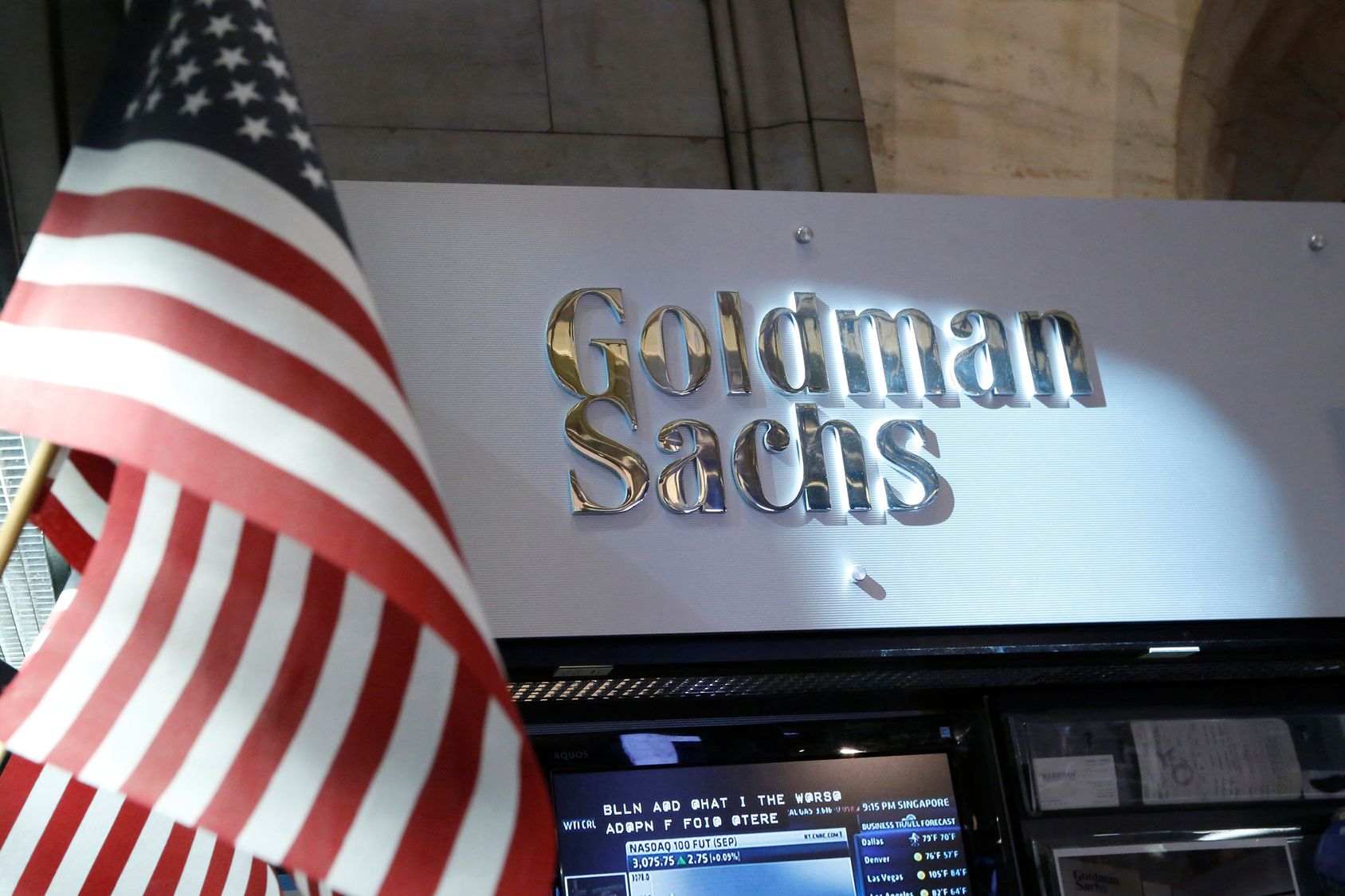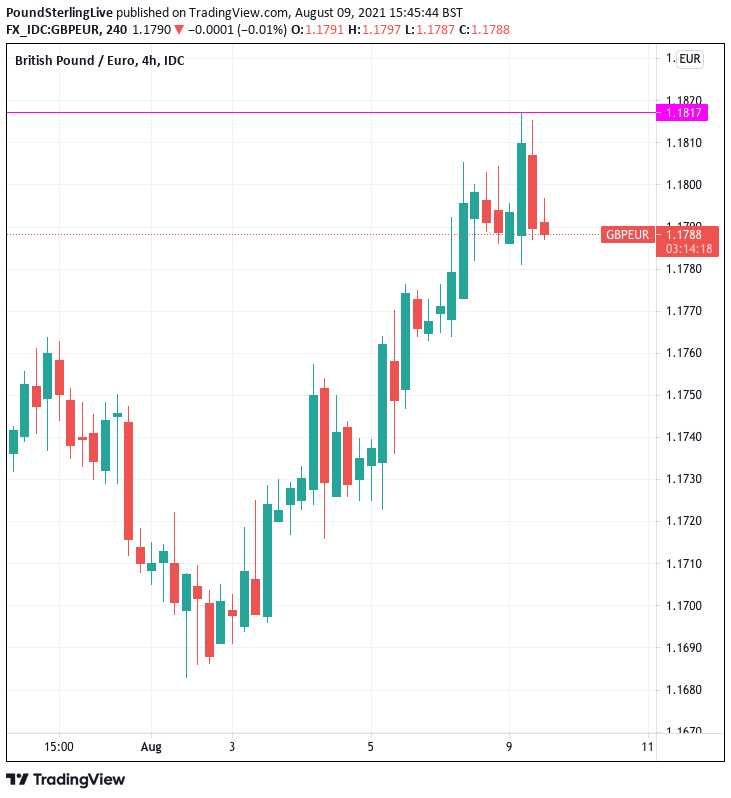Goldman Sachs Upgrade Pound Sterling Forecasts vs. Euro
- Written by: Gary Howes
- GBP/EUR goes back above 1.18
- Goldman Sachs raise forecasts
- But still see pair ending year lower than current levels
- Reiterate cautious stance on GBP

- GBP/EUR reference rates at publication:
- Spot: 1.1795
- Bank transfers (indicative guide): 1.1480-1.1565
- Money transfer specialist rates (indicative): 1.1690-1.1710
- More information on securing specialist rates, here
- Set up an exchange rate alert, here
Foreign exchange analysts at Goldman Sachs say they are upgrading their forecasts for the British Pound following the August policy update from the Bank of England, although they will retain a cautious stance on the UK currency that means their year-end forecasts are still lower than current levels.
The Wall Street investment bank says it expects the Bank of England to disappoint against the market's current base-case expectation for interest rate hikes, the first of which is expected by a plurality of investors to occur in 2022.
"The Bank of England’s updated outlook and exit guidance essentially aligned with the market’s view that the time for liftoff has been pulled forward, but the likely glide path will be relatively shallow," says a regular weekly currency briefing note from Goldman Sachs.
The Bank of England on Thursday August 05 raised inflation forecasts and effectively endorsed market expectations for an interest rate rise in 2022.
The development has aided the Pound-to-Euro exchange rate over subsequent days and the pair is back to just above 1.18, with foreign exchange markets judging that interest rates in the UK will rise well ahead of those in the Eurozone.
The GBP/EUR went as high as 1.1817 on Monday, a new 18-month best.
"The Pound moved above the 1.18 handle against the Euro for just the second time since the coronavirus pandemic hit, presenting a rare opportunity for those looking to cash in on Sterling’s recent rise. The Pound has benefitted in recent days by a more hawkish outlook from the Bank of England, which expects UK inflation figures to top 4% later this year, with some level of policy tightening likely to be necessary," says Matt Nobes, UK Deputy Head of Trading at Global Reach.
Above: GBP/EUR has risen through August to a 2021 high
Secure a retail exchange rate that is between 3-5% stronger than offered by leading banks, learn more.
Goldman Sachs concede they have been cautious on Sterling over recent months partly because their economists had expected the Bank of England to push back somewhat on market pricing for a 2022 rate rise.
"Instead, the BoE only lowered the policy rate threshold for when balance sheet runoff can begin, but reconfirmed that the policy rate will be the first lever," says Goldman Sachs.
The Bank of England said they would start reducing the amount of bonds they held under their asset purchase programme (also known as quantitative easing) once the Bank Rate had risen to 0.5%.
This grabbed investor interest given previously that threshold had been set at 1.5%.
"Because G10 FX is most tightly linked with the front end of the yield curve, there are still potential implications for the currency if the MPC continues to consider balance sheet policy more actively than its peers," says Goldman Sachs.
Nevertheless, Goldman Sachs maintain a cautious approach to the Pound saying the Bank of England will disappoint a market expecting a 2022 interest rate rise, with their economists expecting the first hike in 2023.
The economists think there is more 'slack' in the economy, "which should translate into softer labor market and inflation data through year-end than expected by the BoE".
'Slack' is a concept that describes how an economy can continue to add jobs without pushing up wage price pressures, typically because there is a sizeable pool of unemployed workers.
{wbamp-hide start}
{wbamp-hide end}{wbamp-show start}{wbamp-show end}
The risk for forecasters at Goldman Sachs, and indeed at the Bank of England too, is that there is in fact less slack in the economy than they assume.
It was reported by KPMG last week that their regular monthly labour market survey now showed permanent staff appointments and temporary billings have both risen to near-record rates.
KPMG and REC's UK Report on Jobs for July showed a record rise in starting salaries as candidate availability falls sharply also show are reflected in other similar surveys, confirming the UK's labour market continues to rapidly improve.
However, the Bank of England will want to see official labour market in the wake of the ending of the government's furlough scheme in September before reaching a confident assessment of the labour market.
Upcoming employment data should therefore be of heightened importance for foreign exchange markets.
"Expect the currency to be particularly sensitive to incoming data on inflation and the labor market as the furlough scheme expires," says Goldman Sachs.
Although they upgrade their forecast profile for Sterling these levels remain below current market rates.
The investment bank has upgraded its three-month and six-month forecasts for the Pound-to-Euro exchange rate to 1.1765 (EUR/GBP 0.85).
They twelve-month forecast is revised to 1.15 (EUR/GBP 0.87).
"In revising their Bank Rate forecast our economists noted that risks are skewed toward earlier hiking, which also implies that risks are for a lower path for EUR/GBP than in our updated projections," says Goldman Sachs.






